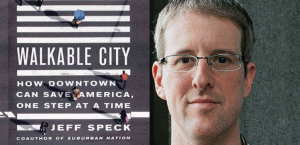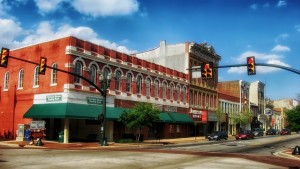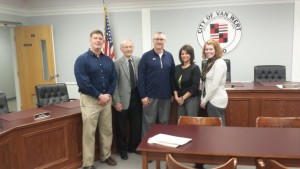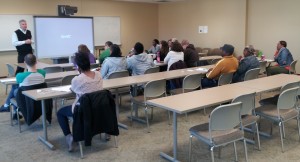How do we achieve excellence? We stop what we are doing, stand back, and assess efforts. At this point we are better able to recognize special accomplishments.

Raymond A. Schindler
The Raymond A. Schindler Excellence in Community Development Extension Award is named in honor of Raymond A. Schindler, one of the first Extension CD professionals in Ohio. Hired in 1962 as an Area Extension Agent, Ray began his career in southern Ohio, based in Highland County. He took a collaborative approach to his work, focusing on tourism development, comprehensive planning, planning commissions, and business retention and expansion programs until his retirement in 1988.
Today, we recognize Extension CD professionals with The Raymond A. Schindler Excellence in Community Development Extension Award. The annual award seeks to recognize:
- long term strengths in teaching and research
- a long-standing record of teamwork and collaboration in program planning, implementation and evaluation
- a successful track record in grant awards, cost recovery, or other external funding

Susan Colbert
Just last week (January 24), we recognized Susan Colbert with the Raymond A. Schindler Excellence in Community Development Extension Award for her ability to develop and deliver multidisciplinary, evidence-based programs in collaboration with colleagues, stakeholders, private industry and state and federal funding partners that empower others to affect positive change. Since joining Ohio State University Extension in 1998, she has truly demonstrated a record of excellence in creative and scholarly work, teaching and service to community and profession.
Click here to learn more about Susan and her work.

Greg Davis, professor and assistant director, OSU Extension CD.
The content of this site is published by the site owner(s) and is not a statement of advice, opinion, or information pertaining to The Ohio State University. Neither text, nor links to other websites, is reviewed or endorsed by The Ohio State University.

 Communities across the nation have seen the positive impacts a thriving downtown has on community development. If you believe your downtown could use a little TLC, suggest to your community development leaders consider strategies for revitalizing your downtown.
Communities across the nation have seen the positive impacts a thriving downtown has on community development. If you believe your downtown could use a little TLC, suggest to your community development leaders consider strategies for revitalizing your downtown. Many small towns want to improve their current condition for a number of reasons. What we often hear from residents and leaders is: “We are tired of our “best and brightest” leaving the area for college and never returning because we have no jobs/careers for them,” or “Our retired residents have to seek appropriate housing in other communities because there isn’t any here,” or “The youth that remain are not “work ready” and opioid use among them has become a real problem.” Some of these towns have existing community or economic development plans that, while they might offer viable solutions, were never fully implemented (the old “the plan sits on the shelf” complaint).
Many small towns want to improve their current condition for a number of reasons. What we often hear from residents and leaders is: “We are tired of our “best and brightest” leaving the area for college and never returning because we have no jobs/careers for them,” or “Our retired residents have to seek appropriate housing in other communities because there isn’t any here,” or “The youth that remain are not “work ready” and opioid use among them has become a real problem.” Some of these towns have existing community or economic development plans that, while they might offer viable solutions, were never fully implemented (the old “the plan sits on the shelf” complaint). The success of that campaign made me wonder what the secrets were. That became even truer when I started working in rural areas. After all, Pure Michigan highlighted
The success of that campaign made me wonder what the secrets were. That became even truer when I started working in rural areas. After all, Pure Michigan highlighted  What communities in Ohio feel the most significant impact of new energy development? Rural communities with relatively low population density and little economic and social diversification experience the most significant effect according to research. Such communities are exposed to the long-term economic fluctuations experienced by natural resource dependent economies. They cannot easily absorb change and the development that has been associated with challenges related to social and family services, agriculture and land issues, and community infrastructure. How can we help? We can focus on increasing community capacity and enhancing education and training.
What communities in Ohio feel the most significant impact of new energy development? Rural communities with relatively low population density and little economic and social diversification experience the most significant effect according to research. Such communities are exposed to the long-term economic fluctuations experienced by natural resource dependent economies. They cannot easily absorb change and the development that has been associated with challenges related to social and family services, agriculture and land issues, and community infrastructure. How can we help? We can focus on increasing community capacity and enhancing education and training.


 OSU Extension forged a partnership with Increase CDC (Community Development Corporation) and the Ohio CDC Association and offers Individual Development Accounts (IDAs), a savings incentive program designed to help low-moderate income, working individuals accumulate assets (home ownership, microenterprise or post-secondary education).
OSU Extension forged a partnership with Increase CDC (Community Development Corporation) and the Ohio CDC Association and offers Individual Development Accounts (IDAs), a savings incentive program designed to help low-moderate income, working individuals accumulate assets (home ownership, microenterprise or post-secondary education). Now that Halloween has passed, we are starting to once again be reminded that the gluttony of holiday shopping is just around the corner. Already my Facebook wall is full of memes and commentary from my friends about where they will and won’t shop on Black Friday. However, there is a larger and much more important question at stake when it comes to where to do your shopping for the holidays. In a time when rural communities are threatened by unemployment, out migration, and job loss, where we spend our hard earned dollars counts more than ever.
Now that Halloween has passed, we are starting to once again be reminded that the gluttony of holiday shopping is just around the corner. Already my Facebook wall is full of memes and commentary from my friends about where they will and won’t shop on Black Friday. However, there is a larger and much more important question at stake when it comes to where to do your shopping for the holidays. In a time when rural communities are threatened by unemployment, out migration, and job loss, where we spend our hard earned dollars counts more than ever. Understanding this flow is key to understanding why it is so imperative to shop locally and support small businesses this holiday season. Money has to flow through the economy to keep a community strong, and it flows best when it is spent locally. So this holiday season, I hope you join me in supporting your local Main Street!
Understanding this flow is key to understanding why it is so imperative to shop locally and support small businesses this holiday season. Money has to flow through the economy to keep a community strong, and it flows best when it is spent locally. So this holiday season, I hope you join me in supporting your local Main Street! A case study was conducted of a county in Eastern Appalachian Ohio with a population of 42,000. In this community where 13 hotels are located, five have been built in the past three years. With the increased capacity and occupancy of hotels has come an increase in the bed tax. This year a decline has begun in the bed tax due in large part to the reduction in energy exploration.
A case study was conducted of a county in Eastern Appalachian Ohio with a population of 42,000. In this community where 13 hotels are located, five have been built in the past three years. With the increased capacity and occupancy of hotels has come an increase in the bed tax. This year a decline has begun in the bed tax due in large part to the reduction in energy exploration.